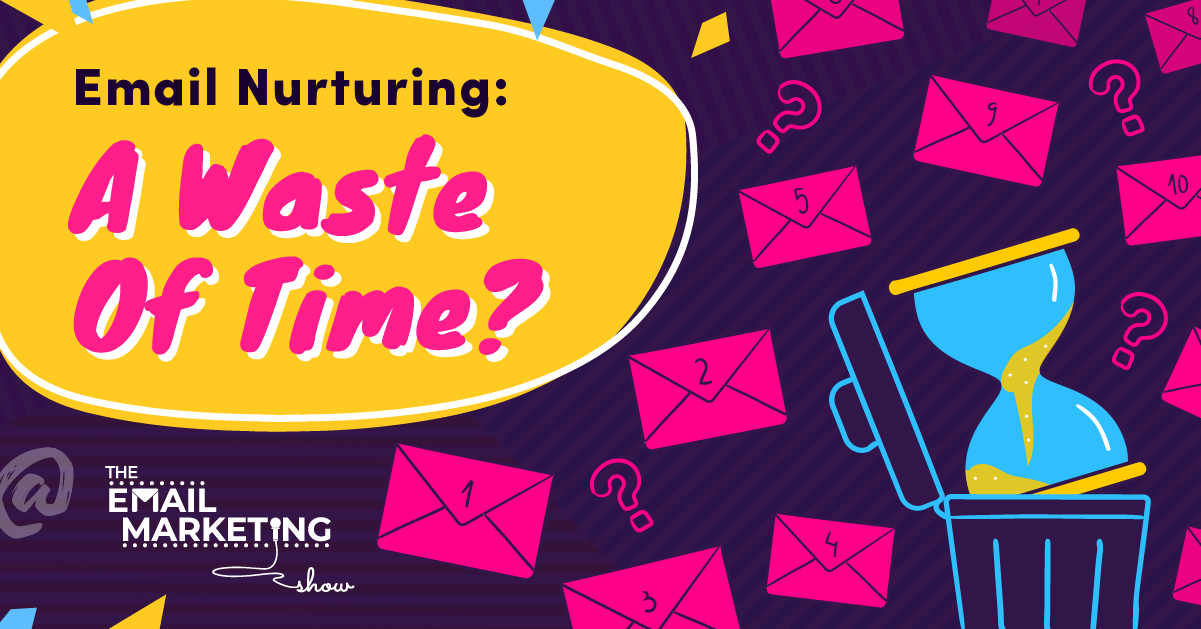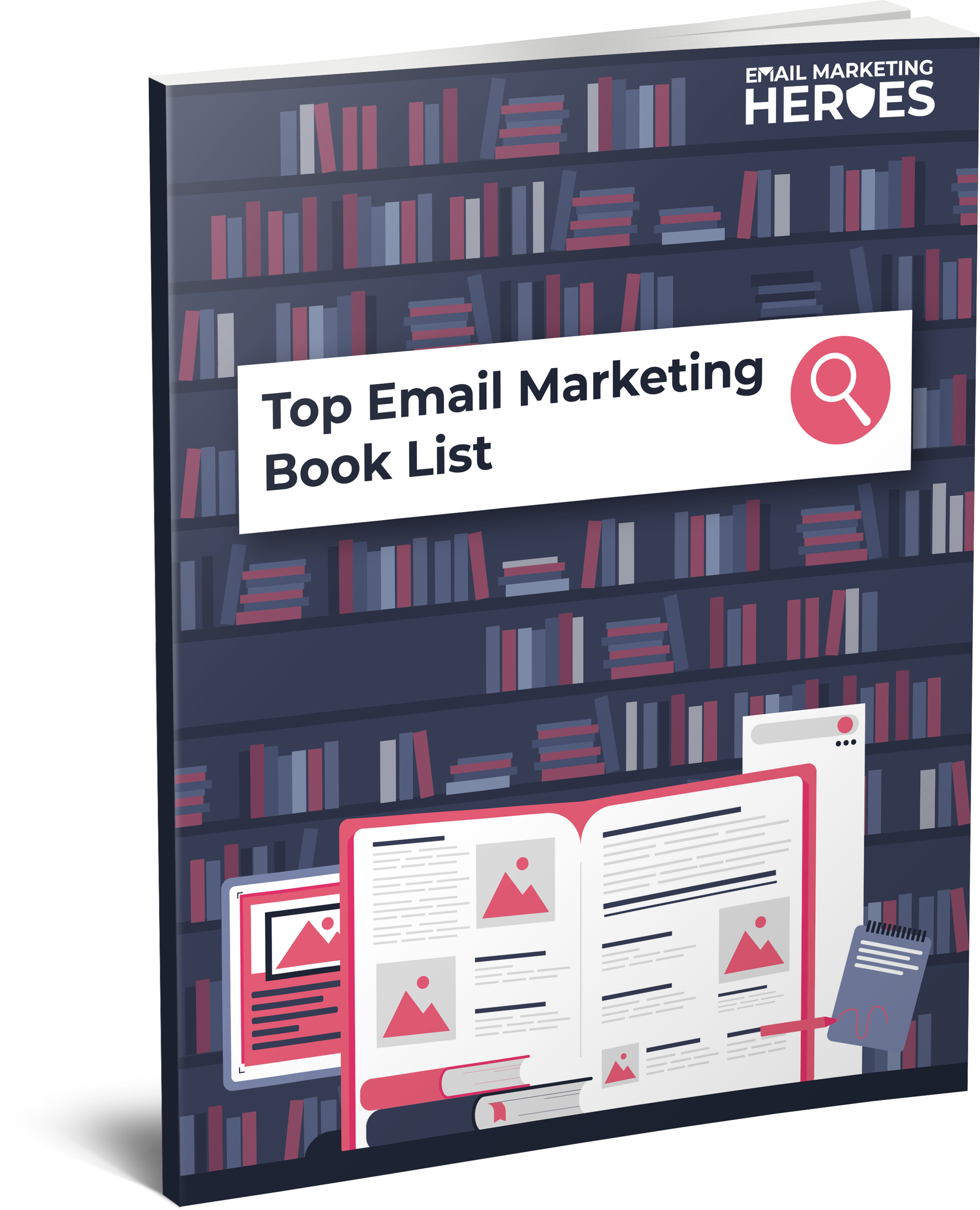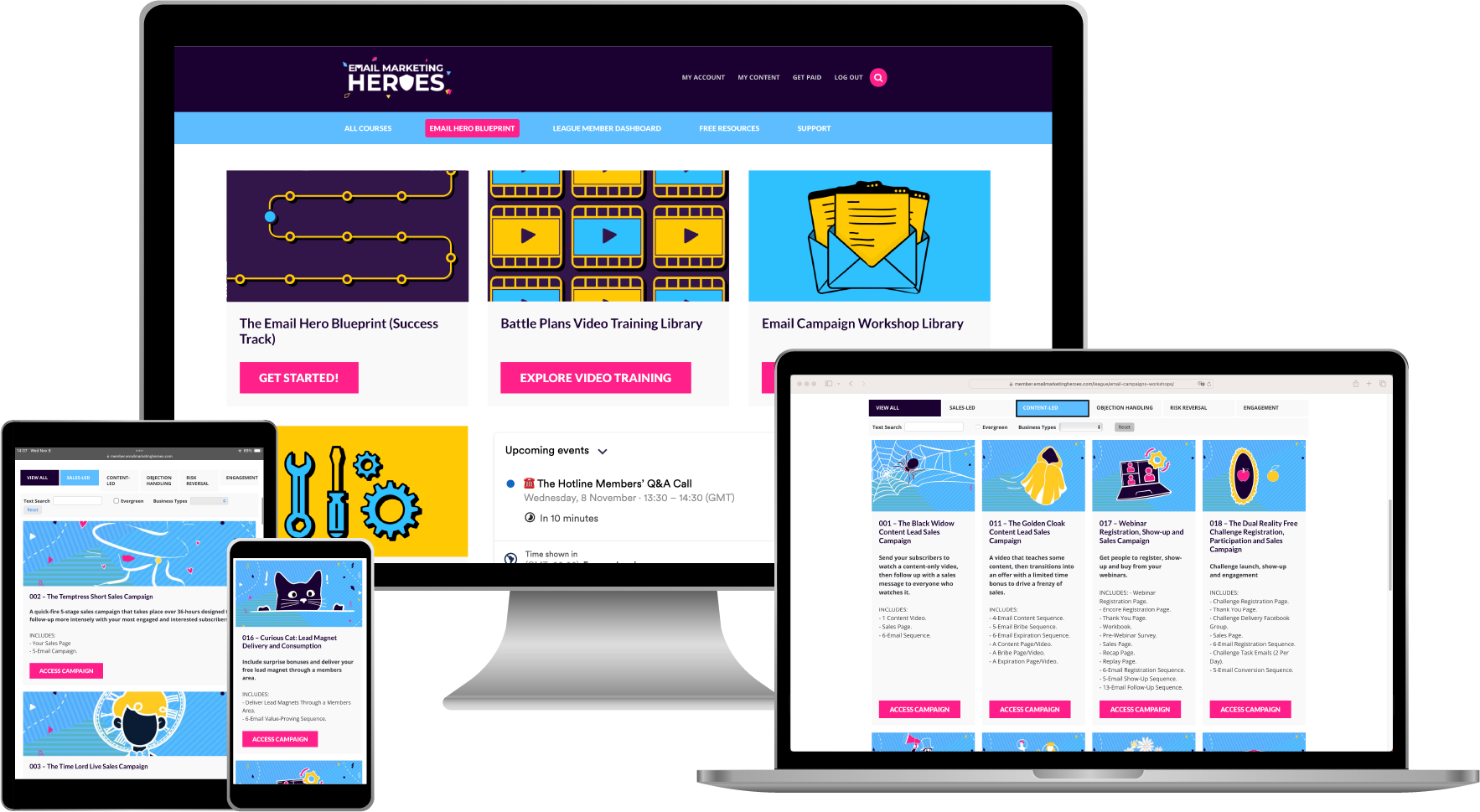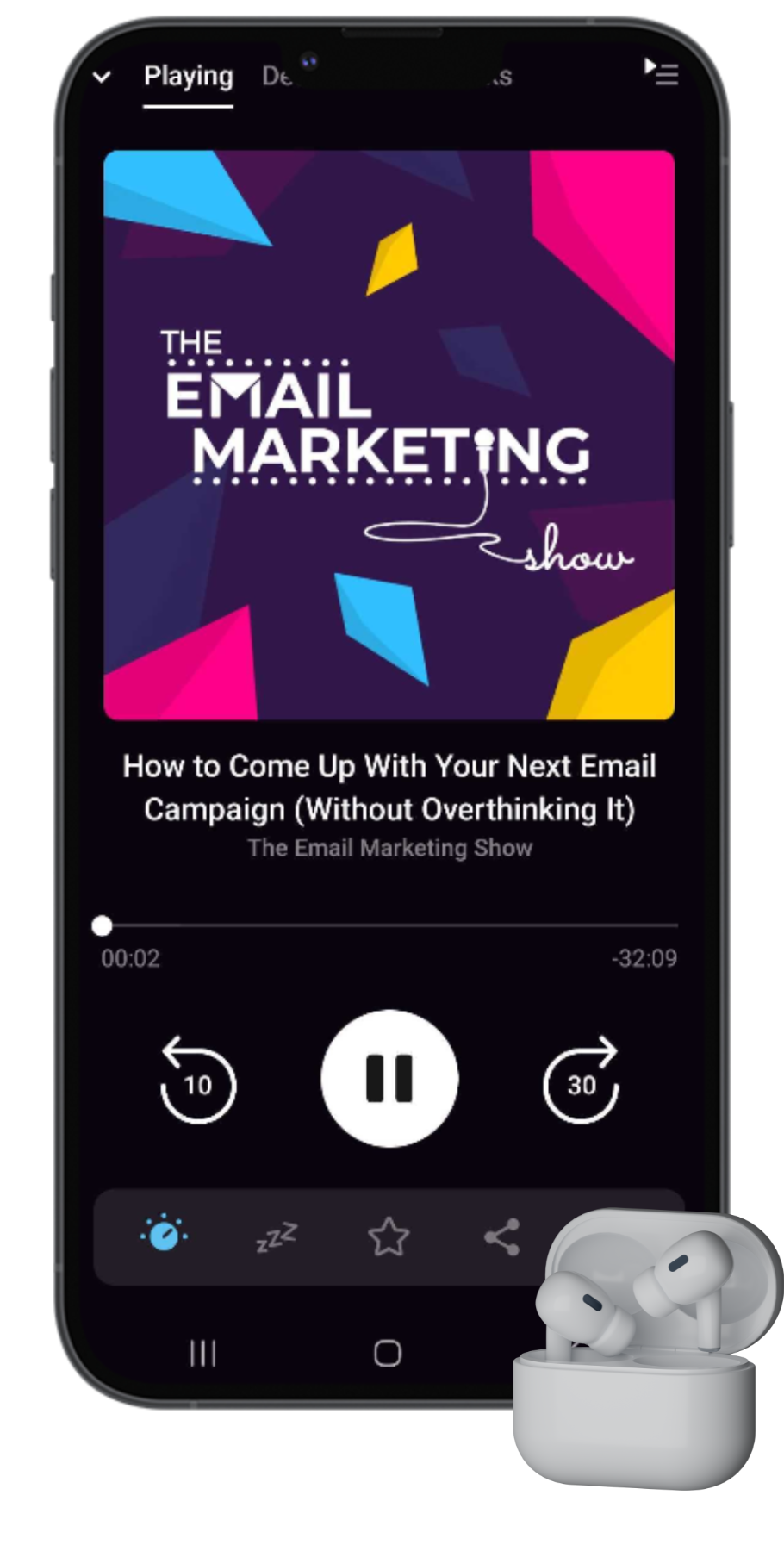
Is Email Nurturing A Total Waste Of Your Time (And What’s The Right Way To Do It)?
Is email nurturing a big waste of time? Do you really have to keep someone on your list for years and years before they buy anything from you?
The answer is no.
There's a better way to make sales in your business and use email marketing to your advantage.
Want to know how?
Let's find out.
SOME EPISODE HIGHLIGHTS: (0:15) Want a FREE resource to get more clicks on your emails? Check out Click Tricks. (3:11) Check out our sponsor Poster My Wall. (3:50) What do we mean by nurturing your email list? (6:23) What should you actually do to nurture your email list? (9:11) Our SCORE email engine. (11:46) Nurturing your list with your daily emails. (14:02) How you 'keep people warm'. (15:07) The 'penny-drop' moment. (16:52) What you shouldn't do to nurture your list. (20:01) Subject line of the week.
What do we mean by nurturing your email list?
A lot of people think that the whole idea of email marketing is to get people on your email list and then spend the next 20 years making them think that maybe one day they might buy from you because you’ve been such a lovely person to them for so long. And for those people, this is their entire email marketing strategy.
But that’s not a strategy.
That's hoping, praying, and wishing.
And that's not what nurturing is in our book. Nurturing isn't about turning subscribers into customers via long-term sequences of a million emails that are designed to get people to buy over a number of years. If you do that, you're accepting these people into your world and then effectively putting them ‘in the oven'. You're trying to ‘keep them warm' until one day they may or may not buy from you. That's not what we mean by nurturing your email list.
And if you're doing it that way, you are wasting your time.
What should you actually do to nurture your email list?
What you should do instead is to have sales campaigns that are designed for people to buy from you right now. And if they don’t buy, by all means, you carry on with nurturing sequences that ‘keep them warm’ but only to glide back into another sales campaign at some other point.
When someone joins our list, they go through our email engine, which is designed to sell. If they get to the end of a sales sequence and don’t buy, they go into our closest thing to long-term nurture, which is our day-to-day emails. But they don’t particularly know or notice that – they'll simply feel like an offer has come to an end because there's no huge difference in how the various emails look and feel. And every 5-8 weeks, we’ll run another sales campaign.
Most people buy within the first 60 days of joining your list
When you think about it, the reason why anyone joins an email list is because they have a problem that they want to solve. They want to learn about the thing you teach. And when we looked at the data in our business, it’s no surprise we found that if people don’t buy from us in the first 60 days of joining our email list, their chance of ever buying from us plummets to less than 5%.
And this makes perfect sense. If someone joins your list to learn about how to train their puppy, for example, they need to fix that problem now – not two or six months down the line! If your marketing strategy is based on nurturing these people for 90-180 days (or even longer), you’re missing out on the time during which your subscribers need to solve their problems. So you have to tell them about your core product or service right now and give them a chance to buy.
Our SCORE email engine
This is what we do with our SCORE email engine, which is a bunch of 5 different email campaigns, where each campaign is made up of several emails (between 6 and 25). Every subscriber on our list goes through it in the first 60 days of joining.
Each campaign represents a different phase of our SCORE engine, which means it appeals to a different type of buyer or subscriber. So here are the 5 campaigns making up the SCORE acronym/engine:
- S for Sales. The first campaign appeals to your more urgent buyers – they want to solve their problem right now. That's why we kick off our chain of campaigns with a sales-led one.
- C for Content. Then we move to a content-led campaign. We lead with education but turn that into an offer. It’s not content for content’s sake – it's not distracting people or adding more overload.
- O for Objection-handling. This is specifically created to address the objections that people have to buying. For example, it could be that they don’t believe the product or service will work for them or that they don't have what it takes to get results.
- R for Risk reversal or Risk removal. This is where we reduce or remove the risk of buying. Because sometimes people think that the risk of investing is way higher than their ability to get the results they need.
- E for Engagement. And finally, the last campaign is designed to generate engagement.
By this point (and by the end of the 60 days), we've given someone plenty of opportunities to buy. Because everyone who joins our list – no matter when they join or what's going on in our business or personal lives at the time – goes through that same sequence of campaigns. And if they haven’t bought by the first 60 days it's because the timing isn’t right for them.

The Top 10 Books To 'Power Up' Your Email Marketing
10 book recommendations that will improve all areas of your email marketing (including some underground treasures that we stumbled upon which have been game-changing for us).
Nurturing your list with your daily emails
After the initial 60 days of someone joining our email list, we launch into our long-term nurture activity of daily emails. If you’re familiar with our work, you’ll know that for anyone who is not emailing every day, we recommend you increase the frequency of your emails to daily. That’s what we do. Every day, we send out an email to our list to continue to build a relationship with our subscribers – to nurture the person and the relationship. The job of these emails is to ‘keep people warm’.
Our daily emails not only help us make sales – we get sales every week thanks to our Super Signature and our calls to action. But they also serve us in keeping in touch with people until we're ready for our next big promotion.
Show up in between promotions
For example, every year in June we run our Inbox event. And because we only host it once a year, we can only talk about it in the two weeks leading up to the event. But outside of that, we need to do something to nurture our subscribers. Because if we don’t, by the time we’re ready to promote the event, they won’t be paying attention. And that’s where ‘keeping them warm' comes into play – it's about checking in with people regularly through our daily emails.
In a nutshell, here's how it works. People come into our business, go through a whole email engine, and a lot of them buy from us within the first 60 days. But whether they do or don’t, they go into this nurturing phase where we send them daily emails. And when we have something coming up (like an event, a challenge, a summit, or a webinar) we turn up in their inbox with an offer, and they're still paying attention because we've kept them warm with our daily emails.
This way, we get the best of both worlds. We get sales very fast (which is what any business needs to do to survive), and then we’re able to take all those subscribers and customers and maintain that relationship through our daily emails.
How you ‘keep people warm'
So what can you share in your daily emails to nurture your email list? We keep our list warm by using storytelling and giving them insight into our day-to-day lives. There are always random things that happen to you in a day that people can learn and benefit from. That's why we always start our podcast episodes by sharing a random fact about ourselves, for example. It's memorable, and people care and pay attention to what we talk about.
Your day-to-day emails will also address the timing issue. If someone's not bought from you yet because the timing wasn't right, it means that their focus, attention, and priority were on something else. And there’s only a certain amount of marketing that can fix that. If what you sell isn’t a priority for someone right now, then all you can do is keep showing up. You want to be there for them by giving them interesting insights and titbits until it's time for them to buy.
The ‘penny-drop' moment
What you're looking for (and the reason why someone eventually buys) is the ‘penny-drop' moment. With everything we do in our business, we are constantly teaching the same thing from different angles. We are continually saying the same things over and over again until there's a penny-drop moment when someone suddenly gets it, and they’re ready to buy.
Our job is to keep explaining the same concepts by using different analogies, stories, metaphors, lessons, hooks, etc. And when the right one hits, suddenly that person is fully on board and ready to buy. They know that what you sell is for them.
What you shouldn't do to nurture your list
So make sure you don’t make the common mistakes that a lot of people make with this idea of long-term nurture. You shouldn't have the view that when people join your email list you then have to nurture them for years to come. The nurturing happens after you've put your best foot forward and given your subscribers the opportunity to buy.
Definitely don't miss out on nurturing relationships with your day-to-day emails. Because those will help you make sales and address the timing issue. Keep telling people how you help and always give them the opportunity to buy. You need a clear call to action in all your emails and ensure you constantly train your subscribers to click on the links in them. If you don’t, you’re training people out of doing anything.
Also, don't make the mistake of droning on and being boring! Always share new, fresh ways of explaining what you do and the transformation you offer. Everyone wants a slightly differently nuanced transformation, and until they hear the right words – the ones that fit that gap in their mind that they’re trying to fill – they won’t take any action.
Nurturing ‘done right' helps you sell!
Remember – long-term nurturing is about showing up so people know who you are when they’re hunting around for the person who solves a particular problem. That’s why you want to be in their inbox regularly. Nurturing is what happens to keep on top of people’s minds – it's about saying the same things in new ways, but only after you’ve given them the best opportunity to buy through your main SCORE email engine. This is how sales-driven email marketing is done – you should try it!
Subject line of the week
This week’s subject line is “Sneak a peek (at the slides)”. The email was about the fact we had a webinar coming up, and whenever we do, we grab a screenshot of an interesting slide of the presentation we will be sharing, throw it into an email, and then give people a little sneak peek of what we’re working on. People love to look at that stuff, so check it out!
Useful Episode Resources
Related episodes
Use THIS Free-Trial Email Sequence To Turn Your Subscribers Into Paying Customers.
How To Create A Lead Magnet Email Sequence That Gets Your Subscribers To LOVE You.
WTF Is An Automated Customer Journey? Use the SCORE Method.
FREE list to improve your email marketing
If you want to write better emails, come up with better content, and move your readers to click and buy, here's how. We put together this list of our Top 10 most highly recommended books that will improve all areas of your email marketing (including some underground treasures that we happened upon, which have been game-changing for us). Grab your FREE list here.
Join our FREE Facebook group
If you want to chat about how you can maximise the value of your email list and make more money from every subscriber, we can help! We know your business is different, so come and hang out in our FREE Facebook group, the Email Marketing Show Community for Course Creators and Coaches. We share a lot of training and resources, and you can talk about what you're up to.
Try ResponseSuite for $1
This week's episode is sponsored by ResponseSuite.com, the survey quiz and application form tool that we created specifically for small businesses like you to integrate with your marketing systems to segment your subscribers and make more sales. Try it out for 14 days for just $1.
Join The League Membership
Not sick of us yet? Every day we hang out in our amazing community of Email Marketing Heroes. We share all of our training and campaigns and a whole bunch of other stuff. If you're looking to learn how to use psychology-driven marketing to level up your email campaigns, come and check out The League Membership. It's the number one place to hang out and grow your email marketing. Best news yet? You can apply everything we talk about in this show.
Subscribe and review The Email Marketing Show podcast
Thanks so much for tuning into the podcast! If you enjoyed this episode (all about email nurturing and how to do it properly) and love the show, we'd really appreciate you subscribing and leaving us a review of the show on your favourite podcast player.
Not only does it let us know you're out there listening, but your feedback helps us to keep creating the most useful episodes so more awesome people like you can discover the podcast.
And please do tell us! If you don't spend time on email marketing, what do you really fill your working days with? We'd love to know!
One thought on “Is Email Nurturing A Total Waste Of Your Time (And What’s The Right Way To Do It)?”
Leave a Reply
You must be logged in to post a comment.







About your SCORE & nuturing thing, you guys promote only one product to your customers for 60 days, right? What if we have more that one product, a bunch of different courses, how do we apply SCORE in that case?